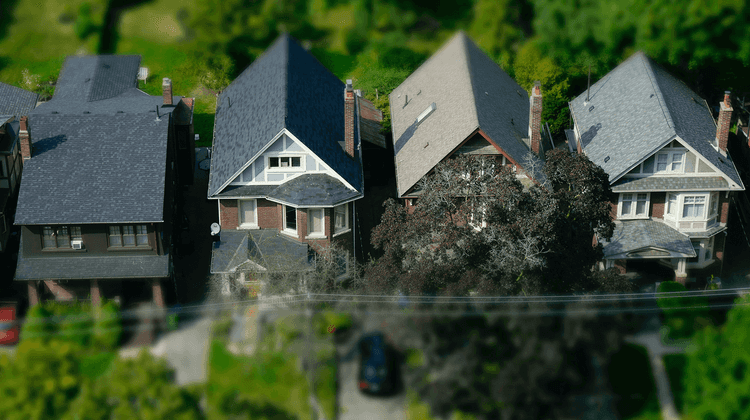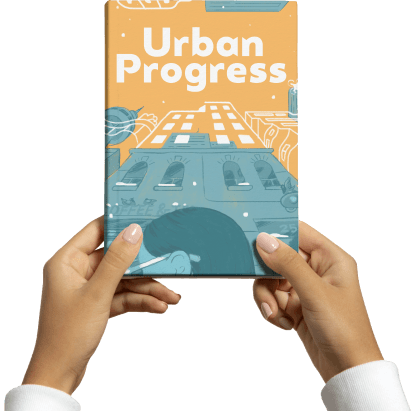The High Cost of High-Cost Housing
One person's retirement nest egg is another's lost chance at a home.
- Daniel Frank
- Feb 25, 2023

Photo by Tiago Rodrigues via Unsplash
TO MANY CANADIANS, the soaring cost of housing is not a problem to be solved but a blessing to be cherished. For many homeowners, a house is not just a place to live: it’s their largest investment and their retirement saving (yes, singular). They are glad when the real estate market rises: this increases their personal wealth and makes them feel that they are better off. A housing crisis such as the one we’re in now—where even households with well above median incomes cannot afford to buy a home—is inflamed by housing scarcity: costs go up when there simply isn’t enough housing to go around. Many of the homeowners who cheer when the market rises are similarly inclined to oppose policies that increase housing density. By supporting policies and politicians that preserve existing density limits, they believe they are safeguarding their neighbourhoods—ensuring they will be quieter, more friendly, and have more robust public amenities. This view is compelling but misguided. While it’s comforting to focus on the prospect of a larger net worth and a pristine neighbourhood, these homeowners will be worse off if the cost of housing continues to soar. The problem is not the high cost of housing but the high cost of high-cost housing. While some large cities in Canada, such as Toronto and Vancouver, have begun experiencing housing scarcity in recent years, the long-term effects of this have not yet materialized; if allowed to worsen unchecked, the future of these cities may look very different. Many people believe the primary cost of expensive housing is the price they pay for a home, but expensive housing impairs everything that allows a city and its residents to flourish. Cities with higher housing costs become poorer over time due to the devastating impact housing scarcity has on the economy. In 2019, researchers at UC Berkeley examined just how bad this could get; they found that housing scarcity could dampen economic growth by as much as 36%. This is the result of a downward spiral that high housing costs can trigger. It starts with an exodus: as real estate prices go up, our most productive cities lose skilled workers and highly talented immigrants, who aren’t able to afford to live in them. With fewer workers available, businesses stagnate, innovate less, and are less productive. These dynamic plays out in in the retail sector as well. Restrictions on density lead to increases in commercial rent while limiting the number of people who live near any particular store, reducing the number of customers as well as the labour supply. The combined increase in costs and decrease in demand means many shops and restaurants will find they are no longer viable; the ones that do hang on have to raise their prices to survive. Unaffordable cities are less dynamic and have less to offer their residents. In contrast, density enables businesses to operate more efficiently and supports a larger and more diverse array of shops and restaurants, not to mention more robust arts and cultural scenes. High-cost housing also distorts the flow of capital in a city, further contributing to an economic downward spiral. Instead of capital going to more productive industries, investment (and wealth-seeking entrepreneurs) gravitates toward real estate projects—which may be lucrative for those involved but do not provide meaningful economic benefit to the broader community, spur innovation, or create as many jobs. On top of all this, the interest rates required to support a housing-oriented economy make recessions and inflation more likely. Along with these economic effects, housing scarcity undermines quality of life in other ways. High housing costs force demographic shifts in our cities as affording a home spacious enough for a family becomes prohibitive. Research has found that every 10% increase in property values corresponds with an expected 1.3% reduction in the number of children born. Homelessness and crime both go up when housing is expensive and have been found to be largely a product of housing unaffordability. Out-of-control prices also damage the environment and take a toll on our health. Expensive housing creates sprawl by increasing demand for suburban and rural developments—communities where infrastructure is inherently less energy efficient and which produce more carbon emissions. In contrast, higher density leads to better health outcomes as people tend to live more active lifestyles, largely aided by having more places to go that are in walking distance, and less of a need to drive everywhere. Many people fear that denser communities will put pressure on public services and amenities—more people trying to play at the local tennis courts, more students per classroom—causing them to deteriorate. But this is short-sighted: increased density lowers the costs of public goods because it increases efficiencies and economies of scale. A denser city can provide amenities more cheaply than a sparsely populated city can. This applies to infrastructure more broadly: roads in densely populated neighbourhoods do not cost significantly more to build than ones in sparsely populated neighbourhoods, but they serve many more people and therefore are cheaper to build on a per-person basis. Residents in dense cities also benefit from the inherent convenience of public services in this environment: it’s more likely that you’ll have a public tennis court close by if you live in a denser city. Government revenues also go up when cities become denser: increased residential and commercial density means more people and businesses paying tax. This enables municipal governments to spend more on public amenities, which improve rather than decay as a result. In short: while it’s tempting for homeowners to focus on the immediate benefits of higher property values and neighbourhood exclusivity, these can trigger a downward spiral in a city, harming the quality of life for all its residents. In the long run, the high costs of high-cost housing leave everyone worse off.
Daniel Frank is a Birkenstock-wearing technology lawyer based in Toronto.

